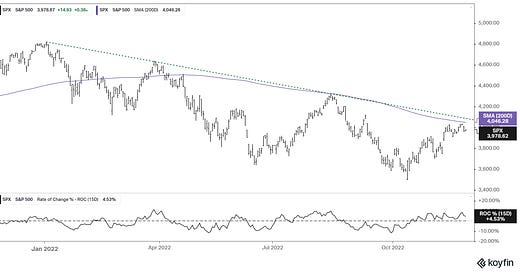We begin by taking another look at the chart posted in yesterday’s note.
Stocks, for a third time since the Fed started its tightening campaign earlier this year, were testing the 200-day moving average(the purple line).
As of yesterday's close, we're 2% off of this level (i.e. lower).
What's going on? Is it social unrest in China? Is it a potential railroad strike looming next month?
Nothing is more important for markets, at the moment, than the inflation outlook, and (related) Fed policy. On that note, the geopolitical landscape continues to be noisy, and a potential contributor to the inflation picture. But we also have meaningful data lined up this week for the Fed to digest. It's jobs week.
And what has Jerome Powell (Fed Chair) told us, explicitly, about jobs?
He wants to bring the number of job openings into balance with the number of job seekers - the prior report shows 1.7 job openings for every job seeker.
Why does the Fed want to induce a softer job market? Wages.
In a labour supply shortage, employees have leverage in negotiating higher wages, particularly in what has been a hot inflation environment. With that, the Fed fears an upward spiral in wages, where wages feed into higher prices, which feed into higher wages ... and so the self-reinforcing cycle goes.
So, on Wednesday (tomorrow) we'll get the October JOLTS report. This will tell the Fed if the job openings/job seeker gap is narrowing. But again, it's an October report. If we look at more current data, covering the month of November, clearly the jobs market is softening.
Here's a look at a chart of layoffs in the tech industry ...
The tech industry shed as many jobs in November as in the prior four months combined.






